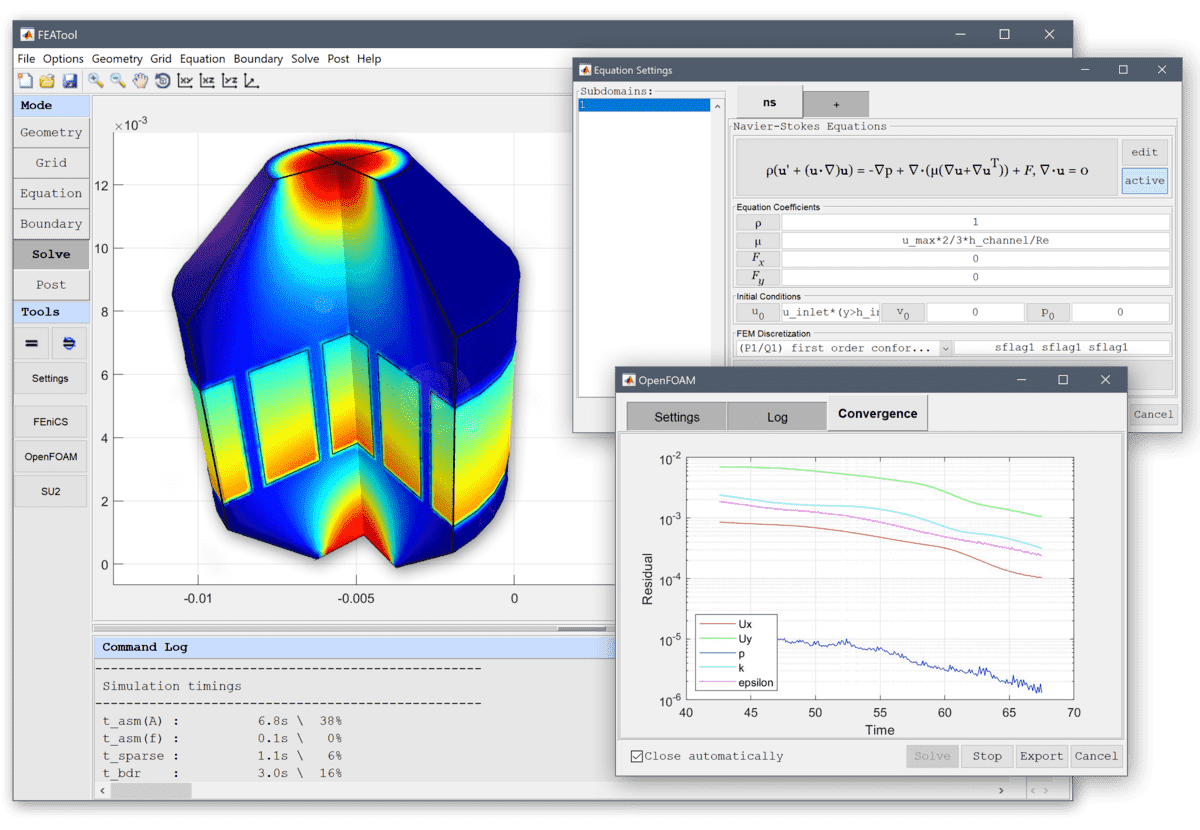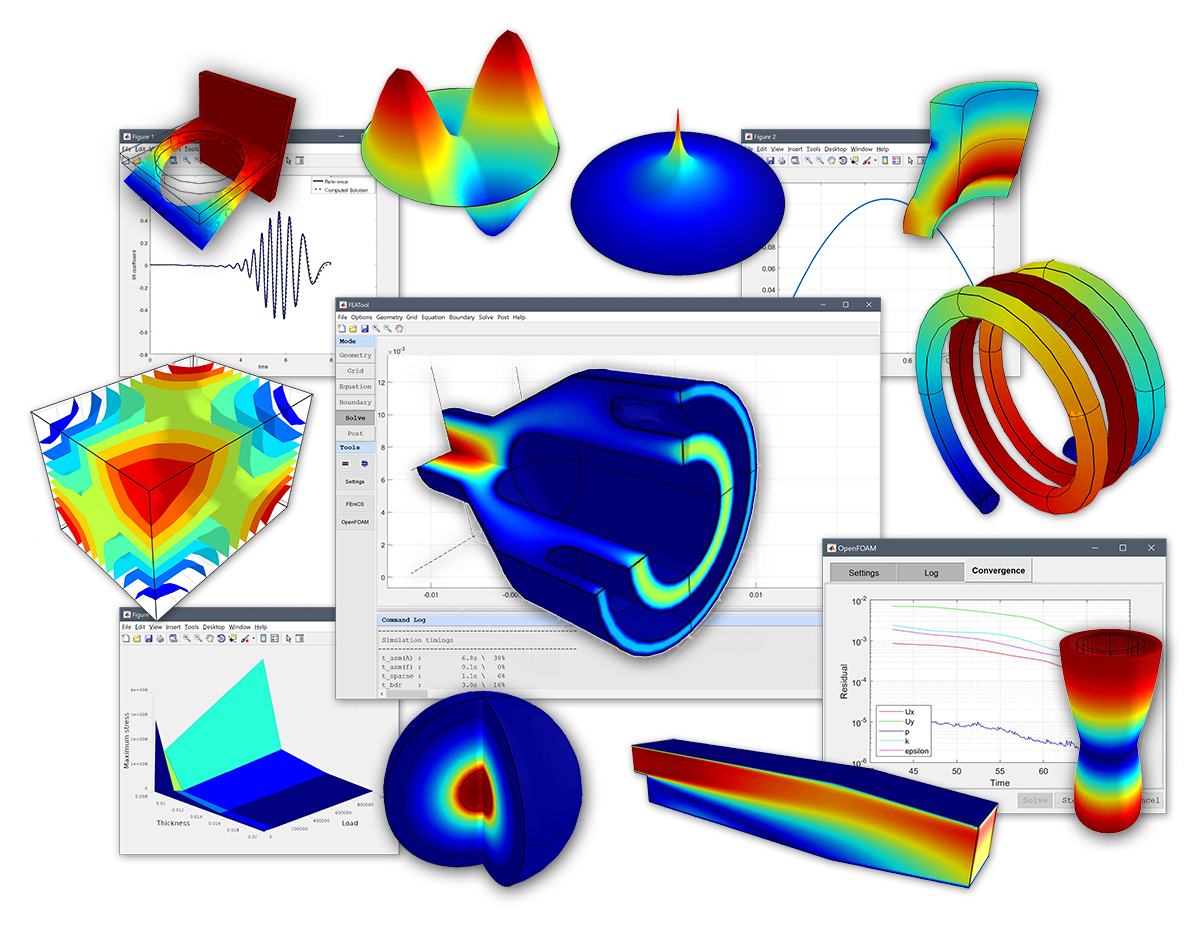Easy to Use GUI

FEATool Multiphysics has been specifically designed to make physics simulation easy to learn and use
Customizable & Extensible
Fully programmable, scriptable, and easy to incorporate into custom work flows and simulation apps
Multi-simulation
- Let the software do the tedious work of learning and configuring solvers for you!
- FEATool Multiphysics saves time for analyzing and evaluating your simulation results instead!
Automated Physics Simulation Simulation script files can be saved and exported directly from the FEATool GUI, and are easily modified to run parametric simulation studies in parallel
One Simulation Tool - Multiple Solvers Use FEATool to automatically set up, define, export, and run multiphysics mesh and case files for OpenFOAM®, SU2 and FEniCS. No need to spend days, weeks, or even months to learn how to use simulation tools anymore
Reproducible Simulation Simulation models can be exported and saved as fully reproducible and version controlled script files. Never be unsure of the simulation parameters you tried again
State of the Art Simulation Technology!
One-Click GUI Interfaces for Open Source Simulation Solvers

OpenFOAM is the leading free, open source software for computational fluid dynamics (CFD), used in industry by VW, BMW, Ford Motor Company, Airbus, Siemens, and General Electric

SU2 is one of the most popular academic research and open source CFD solvers applicable to a wide range of specialized flow problems such as compressible flows and aerodynamic shape optimization

The FEniCS Project is an open source academic multiphysics FEA simulation code from Argonne National Laboratory, Chalmers University, University of Cambridge, and Simula Research Laboratory


The FEATool toolbox features built-in 3D visualization and postprocessing including one-click export to fully interactive ParaView Glance and plotly web browser plots, which can be explored and easily shared with colleagues on-line


FEATool Multiphysics is a fully scriptable Multiphysics Simulation Platform. Featuring native MATLAB integration with an easy and convenient programming API, and connections to Add-Ons such as Simulink, Optimization, and Control Systems toolboxes. In addition, physics models can also easily be converted to advanced FEniCS Python simulation scripts, modified, and run directly in the GUI


